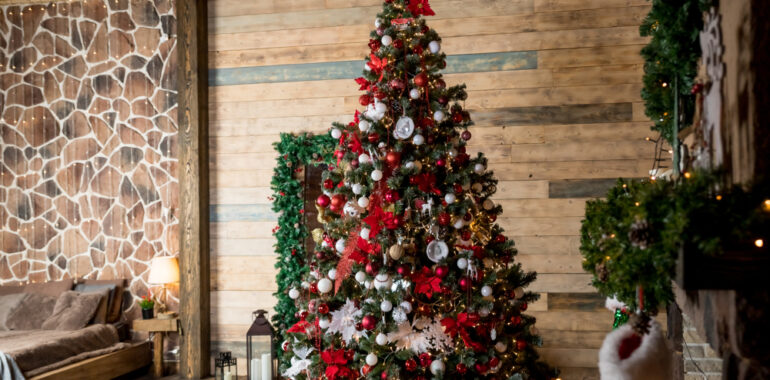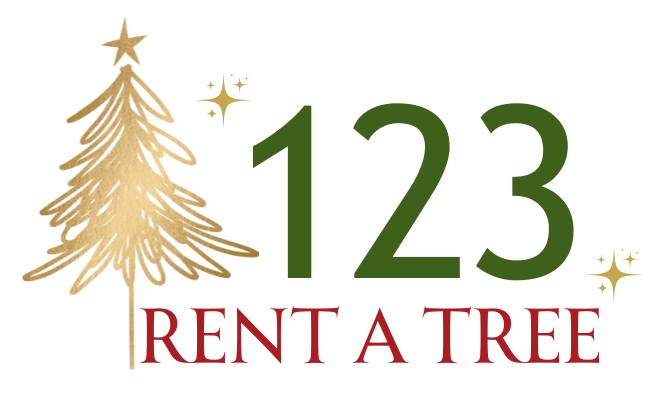
7 Tips for Renting a Christmas Tree vs. Buying One
The holiday season is a time of joy, celebration, and traditions. One of the most iconic symbols of Christmas is the Christmas tree, which often takes center stage in homes during the festive season. While traditionally, families would go out and buy a natural or artificial Christmas tree, in recent years, renting a Christmas tree has become an increasingly popular option. This trend appeals to those looking to reduce waste, support sustainability, or avoid the hassle of maintaining a tree. But how do you decide between renting and buying?
Here are seven tips to help you weigh the pros and cons of renting versus buying a Christmas tree. Learn which option best suits your needs, and we’ll introduce you to an excellent rental service that makes this decision even more accessible.
1) Consider Sustainability
Renting a Tree: Sustainability has become a significant factor in many people’s decision-making process, and the environmental impact of cutting down millions of Christmas trees every year is substantial. By renting a Christmas tree, you are supporting a more sustainable practice. Many companies offering tree rentals provide live, potted trees that are replanted or reused yearly. This reduces the waste associated with throwing out real trees after the holidays. The trees remain alive, meaning they continue to absorb carbon dioxide, and when returned, they’re often replanted to continue growing and improving the environment.
Buying a Tree: On the other hand, buying a real Christmas tree means that after the holidays, the tree is often discarded, contributing to landfill waste. While some communities offer recycling programs that turn old trees into mulch, many remain in landfills. Alternatively, buying an artificial tree might seem more eco-friendly in the short term. Still, artificial trees are typically made of PVC, a type of plastic that is not biodegradable and is challenging to recycle. Even though artificial trees can last many years, they will eventually become waste when discarded.
Tip: If sustainability is your primary concern, renting a tree is the greener option.
2) Assess the Cost
Renting a Tree: The cost of renting a tree can vary depending on the size and type of tree you choose. Typically, renting a Christmas tree can cost slightly more than buying a real tree, as you pay for the tree to be delivered and picked up. However, many people find the cost worth it for the convenience, as rental services often include setup and removal, making the process much easier.
Buying a Tree: Buying a real Christmas tree is usually less expensive upfront, with prices varying based on tree size, type, and location. Artificial trees range from budget-friendly options to luxury models that cost hundreds of dollars. The main advantage of buying an artificial tree is that you can use it year after year, potentially saving money in the long run. However, if you enjoy the tradition of getting a new tree every year, the costs can add up over time.
Tip: Renting a tree may be more cost-effective regarding convenience and sustainability, but an artificial tree may be a better financial choice if you want to invest in a long-term option.
3) Think About Convenience
Renting a Tree: Renting a Christmas tree is often the most convenient option for those with busy lifestyles. Many tree rental companies will deliver the tree directly to your home, set it up for you, and come back after the holidays to pick it up. This eliminates the need for you to transport the tree yourself or worry about its disposal after the season. Additionally, live rental trees often come in pots, so there’s no need to deal with the mess of falling needles or watering them constantly, as the tree is still alive and rooted in soil.
Buying a Tree: Buying a natural or artificial tree requires more effort. You need to transport the tree to your home (which can be challenging for larger trees), set it up, and take it down after the holidays. Real trees require maintenance, including regular watering and sweeping up fallen needles. When it’s time to dispose of the tree, you’ll need to figure out how to get rid of it, whether through a curbside pickup or hauling it to a recycling center.
Tip: If convenience is a priority, renting a Christmas tree is a hassle-free choice, especially with services that include delivery and removal.
4) Factor in Tradition
Renting a Tree: For some, renting a tree may not align with traditional Christmas customs. Many families have long-standing traditions of going to pick out a Christmas tree together, and renting a tree may not have the same emotional appeal. However, renting could become a new tradition for environmentally conscious families, allowing them to feel good about their choice while still enjoying the beauty of a live tree in their home.
Buying a Tree: For those who cherish the ritual of picking out the perfect Christmas tree from a farm or lot, purchasing a tree may hold more sentimental value. Choosing, cutting down (if you’re buying from a tree farm), and decorating the tree can create lasting memories, especially for families with children. Artificial trees can also hold sentimental value as they are reused year after year, becoming a familiar part of holiday decorations.
Tip: If tradition plays a big role in your holiday experience, consider whether you’re open to starting a new, more sustainable tradition by renting a tree.
5) Consider the Aesthetic
Renting a Tree: Live rental trees are generally well-maintained and grown with care, which means they tend to look healthy and fresh. Since they are potted and not cut, they last longer throughout the holiday season. These trees come in a variety of shapes and sizes, so you can find one that fits your aesthetic preferences. However, potted trees are typically smaller than the cut trees found on farms, so if you’re looking for a towering Christmas tree, renting might not provide the size you’re hoping for.

Buying a Tree: Real-cut trees often provide that classic, full-bodied look many people desire in a Christmas tree. Depending on the type of tree you choose, it can be lush, tall, and have a strong fragrance that adds to the holiday atmosphere. Artificial trees, on the other hand, come in a wide range of sizes and styles, including pre-lit and flocked varieties. Some artificial trees are so realistic that it’s hard to tell they aren’t real, and they come in larger sizes if that’s what you prefer.
Tip: If you’re particular about the size or type of tree, consider whether renting can meet your expectations or if buying offers more flexibility in aesthetics.
6) Health and Safety Considerations
Renting a Tree: When you rent a live tree, it is still rooted in soil, which can be healthier for your home. A live, potted tree does not dry out as easily as a cut tree, which reduces the risk of fire hazards. Additionally, live trees are typically more allergy-friendly, as they produce fewer allergens than artificial trees, which can harbor dust and mold over time.
Buying a Tree: Cut trees can dry out, especially if not properly watered, increasing the risk of fire. Artificial trees, especially older ones, may contain toxic chemicals like lead in their PVC materials, which can pose health risks if they degrade over time. Additionally, artificial trees can collect dust and allergens, making them less ideal for individuals with allergies or respiratory sensitivities.
Tip: If health and safety are your primary concerns, renting a live tree offers a safer and healthier option.
7) Environmental Impact of Disposal
Renting a Tree: One key advantage of renting a Christmas tree is the positive environmental impact. After the holiday season, the tree continues to grow and thrive, either by being returned to the nursery or replanted. This ensures that the tree continues contributing to the ecosystem, reducing waste, and supporting green initiatives. Many tree rental services even offer programs where they plant new trees to offset the carbon footprint of the rental process.
Buying a Tree: If you purchase a real tree, it will eventually need to be disposed of. While some areas offer recycling programs where trees are turned into mulch, not all trees are recycled, contributing to landfill waste. While reusable for many years, artificial trees are not biodegradable and will eventually add to plastic waste in landfills.
Tip: If you’re concerned about the long-term environmental impact, renting a tree is the most eco-friendly choice.
Why 123RentaTree is the Best Place to Rent Your Christmas Tree
After considering all the factors—sustainability, cost, convenience, tradition, aesthetic preferences, health and safety, and environmental impact—it’s clear that renting a Christmas tree can be a more practical and eco-friendly choice for many. If you decide renting is the right option, 123RentaTree.com is the best place to rent your tree this holiday season.
At 123RentaTree.com, we offer a seamless experience, from tree selection to delivery and removal, making your holiday season stress-free.
Our beautiful, well-maintained live trees are available in various sizes. They prioritize sustainability by ensuring every tree is cared for year-round and replanted after the holiday season.
Our top-notch customer service provides the perfect tree for your home and needs. By choosing 123RentaTree.com, you opt for convenience and beauty and support environmentally responsible practices during the holidays.
